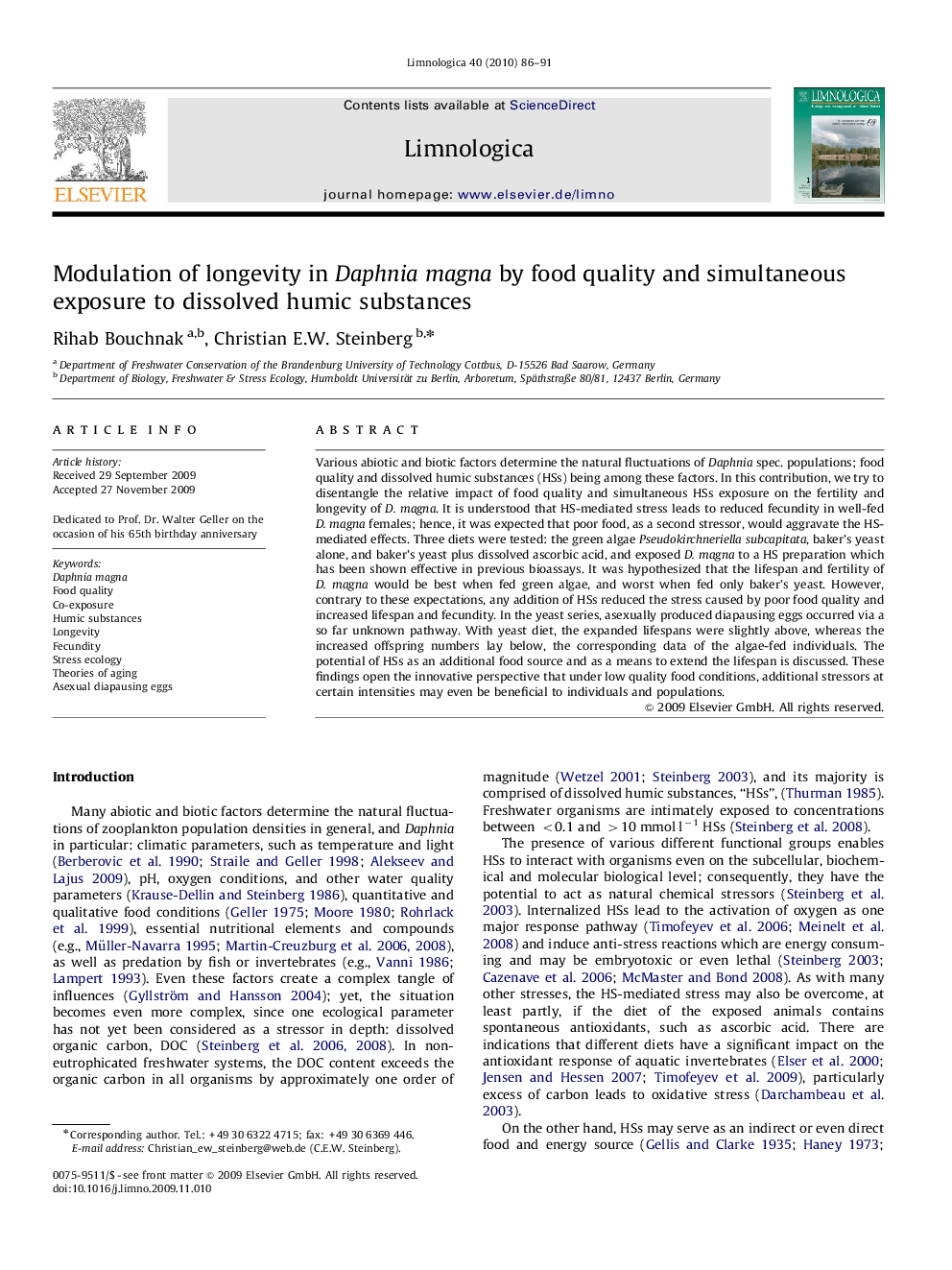| Article ID | Journal | Published Year | Pages | File Type |
|---|---|---|---|---|
| 4400584 | Limnologica - Ecology and Management of Inland Waters | 2010 | 6 Pages |
Various abiotic and biotic factors determine the natural fluctuations of Daphnia spec. populations; food quality and dissolved humic substances (HSs) being among these factors. In this contribution, we try to disentangle the relative impact of food quality and simultaneous HSs exposure on the fertility and longevity of D. magna. It is understood that HS-mediated stress leads to reduced fecundity in well-fed D. magna females; hence, it was expected that poor food, as a second stressor, would aggravate the HS-mediated effects. Three diets were tested: the green algae Pseudokirchneriella subcapitata, baker’s yeast alone, and baker’s yeast plus dissolved ascorbic acid, and exposed D. magna to a HS preparation which has been shown effective in previous bioassays. It was hypothesized that the lifespan and fertility of D. magna would be best when fed green algae, and worst when fed only baker’s yeast. However, contrary to these expectations, any addition of HSs reduced the stress caused by poor food quality and increased lifespan and fecundity. In the yeast series, asexually produced diapausing eggs occurred via a so far unknown pathway. With yeast diet, the expanded lifespans were slightly above, whereas the increased offspring numbers lay below, the corresponding data of the algae-fed individuals. The potential of HSs as an additional food source and as a means to extend the lifespan is discussed. These findings open the innovative perspective that under low quality food conditions, additional stressors at certain intensities may even be beneficial to individuals and populations.
